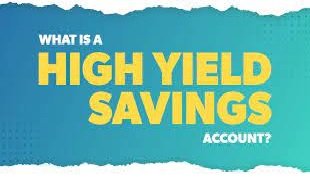High-yield savings accounts are among the most recommended types of investments to have because of their simplicity, stability, and decent potential returns. However, not a lot of people actually understand how this type of account works and how it differs from other types of accounts, such as checking accounts or savings accounts. This may even be the first time that you have come across this term. But worry not; we’re going to help you become familiar with this term by answering some of the most frequently asked questions when it comes to high-yield savings accounts.
By the end of this text, if we have successfully convinced you to open such an account, make sure to check out UFB Direct. They offer some of the best rates for this type of account through their UFB Direct high-yield savings offers. With that said, let’s start answering some of these questions.
- What is a high-yield savings account?
A high-yield savings account is a form of savings account that is usually accompanied by a higher interest rate as compared to traditional savings accounts. Effectively, this means that you, as the account holder, will have a greater potential to grow your investment. The reason why the interest rates are higher with high-yield savings accounts is that they tend to also require a higher minimum balance.
On top of that, it’s also going to be much more demanding or burdensome on the part of the account holder because sometimes banks may require you to submit electronic statements or limit your number of transactions per month. This just means that the barrier to entry to high-yield savings accounts is going to be higher as compared to traditional savings accounts and that maintaining high-yield savings accounts may require more effort on the part of the account holder.
- How do the interest rates compare?
The interest rates for high-yield savings accounts will naturally differ across banks and will also depend on market conditions. However, the general trend is that the interest rates for high-yield savings accounts are going to be several times higher than that of traditional savings accounts. And so, regardless of which bank you choose, it’s going to be consistent that high-yield savings accounts will offer you a better potential of earning interest income on your investment.
- What are the usual requirements to open and maintain a high-yield savings account?
The requirements to open a high-yield savings account are going to be roughly the same as that of a traditional savings account. Of course, this would naturally involve providing the bank with your name, address, telephone number, email address, social security number, and other pertinent information. Finally, high-yield savings accounts typically feature minimum deposit and balance requirements, electronic bank statement requirements, and limited monthly transactions.
- Are high-yield savings accounts insured by the Federal Deposit Insurance Corporation (FDIC)?
Yes. Similar to traditional savings accounts, high-yield savings accounts are also insured by the FDIC. The amount is also set at the same rate, which is up to $250,000 per depositor, per bank, for each deposit category.
- Can I still withdraw money from a high-yield savings account?
Yes, you still can. However, the withdrawals you can make typically come with stringent limits. For example, banks will only allow you up to a certain amount of withdrawals per month or a limited number of withdrawals per month. Although some traditional savings accounts also come with this caveat, the arrangements are generally much more strict with high-yield savings accounts. That being said, it’s very important that you check with your specific bank before making any withdrawals to make sure that you won’t have to pay penalties or fees.





